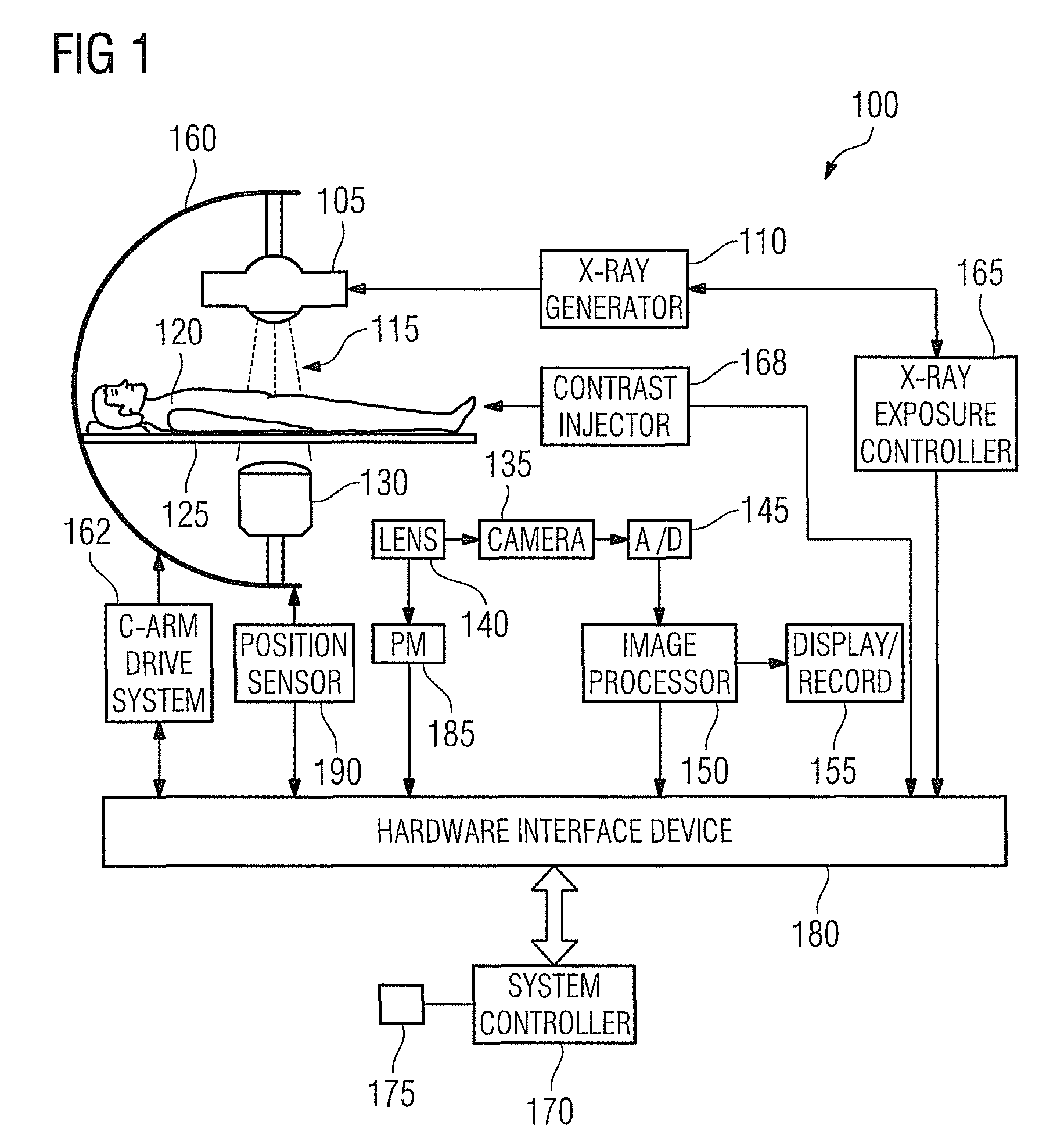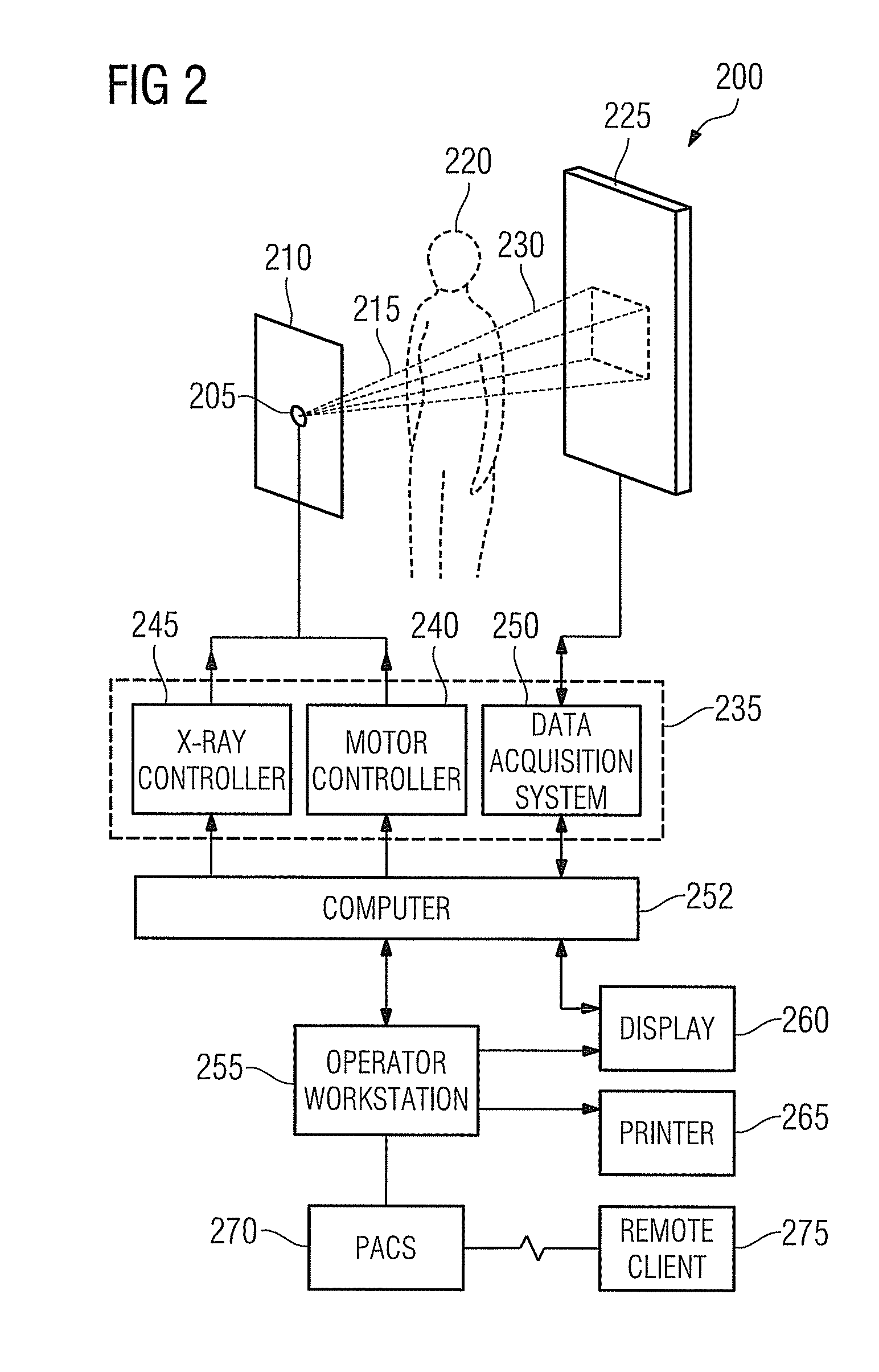Method for pixel shift calculation in digital subtraction angiography and X-ray diagnostic imaging system for generating images in digital subtraction angiography
a diagnostic imaging system and pixel shift technology, applied in image enhancement, instruments, recognition of medical/anatomical patterns, etc., can solve the problems of unwanted flicker, time-consuming background process sampling, and certain latency
- Summary
- Abstract
- Description
- Claims
- Application Information
AI Technical Summary
Benefits of technology
Problems solved by technology
Method used
Image
Examples
Embodiment Construction
[0047]Reference will now be made in detail to exemplary embodiments of the present invention, examples of which are illustrated in the accompanying drawings, wherein like reference numerals refer to like elements throughout. The terms “process” and “method” are generally used to refer to a series of operations performed by a processor, be it a central processing unit of an X-ray system for live fluoro roadmapping, or a secondary processing unit of such a system. Useful machines for performing exemplary operations of the present invention include the AXIOM family of X-ray diagnostic imaging systems and products, by Siemens Medical Systems. The inventive method or process, however, is not limited to implementation on Siemens' X-ray diagnostic imaging systems, but may be implemented in any known or future X-ray system arranged for conducting real-time X-ray subtraction imaging, including live fluoroscopic procedures.
[0048]FIG. 1 depicts an X-ray diagnostic imaging system 100 for live f...
PUM
 Login to View More
Login to View More Abstract
Description
Claims
Application Information
 Login to View More
Login to View More - R&D
- Intellectual Property
- Life Sciences
- Materials
- Tech Scout
- Unparalleled Data Quality
- Higher Quality Content
- 60% Fewer Hallucinations
Browse by: Latest US Patents, China's latest patents, Technical Efficacy Thesaurus, Application Domain, Technology Topic, Popular Technical Reports.
© 2025 PatSnap. All rights reserved.Legal|Privacy policy|Modern Slavery Act Transparency Statement|Sitemap|About US| Contact US: help@patsnap.com



